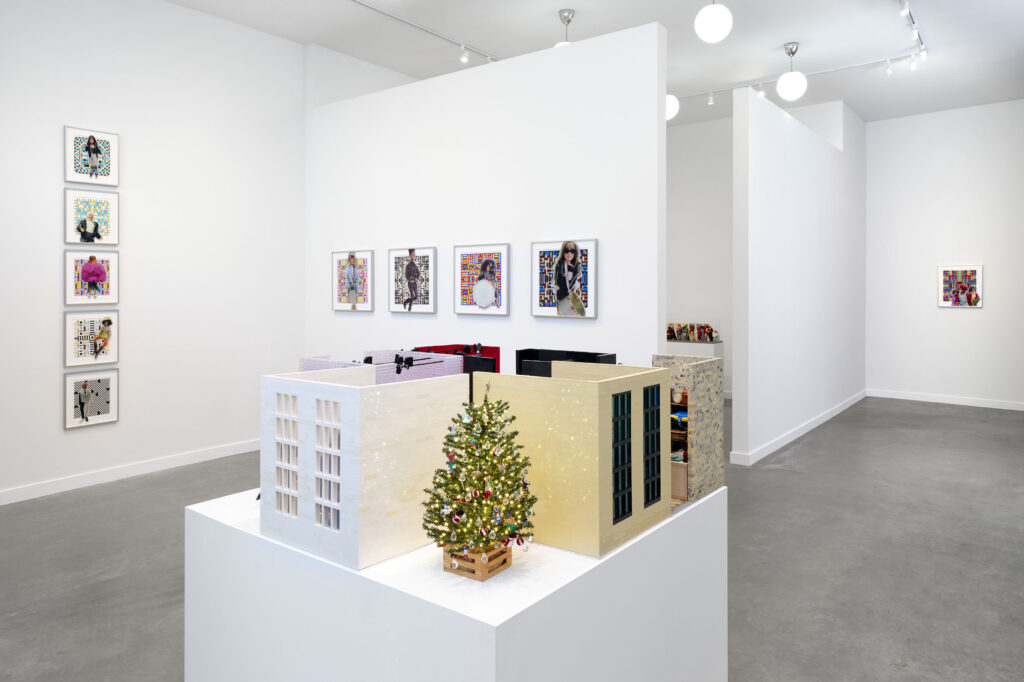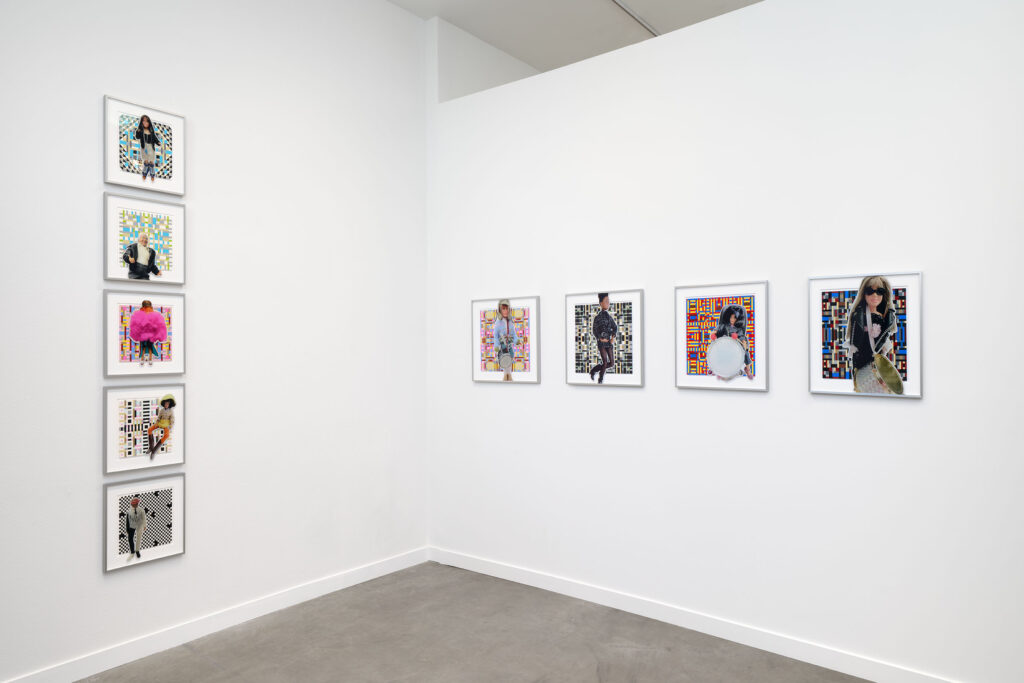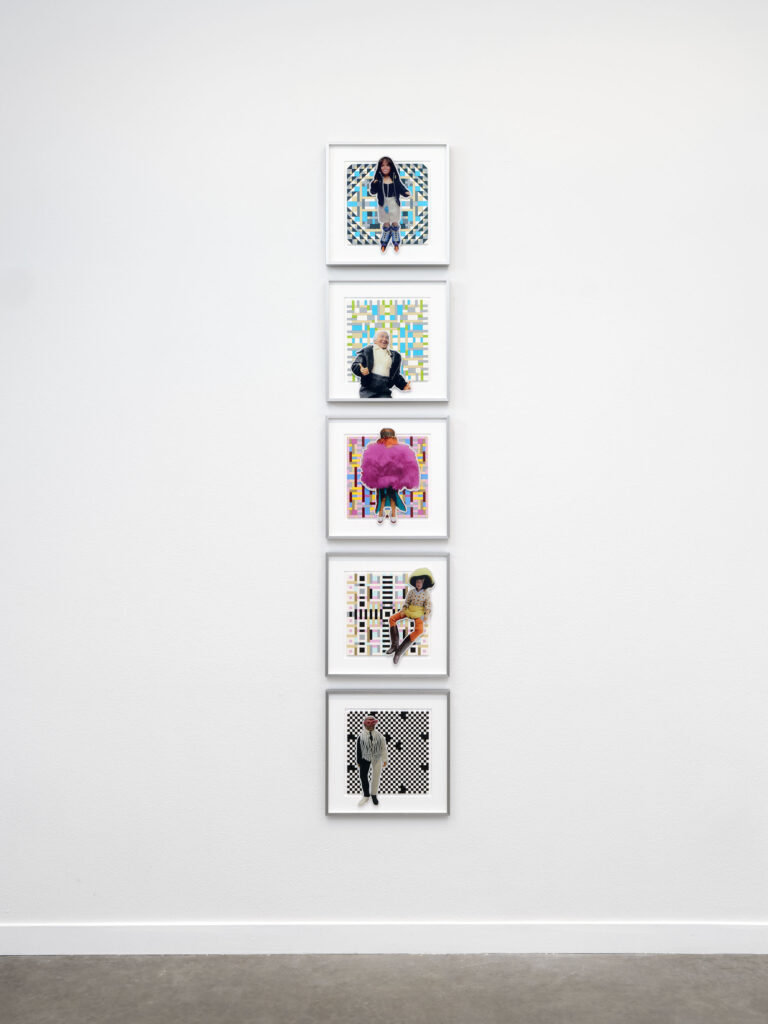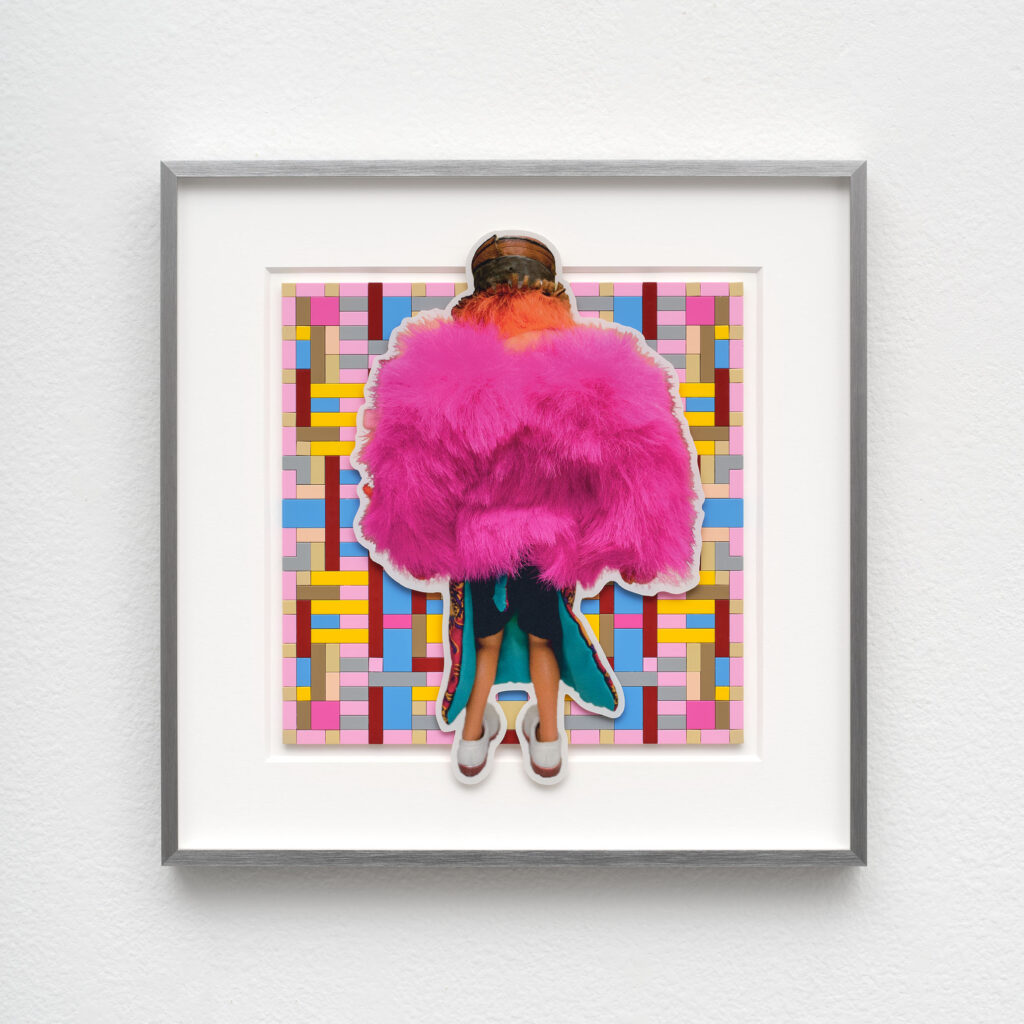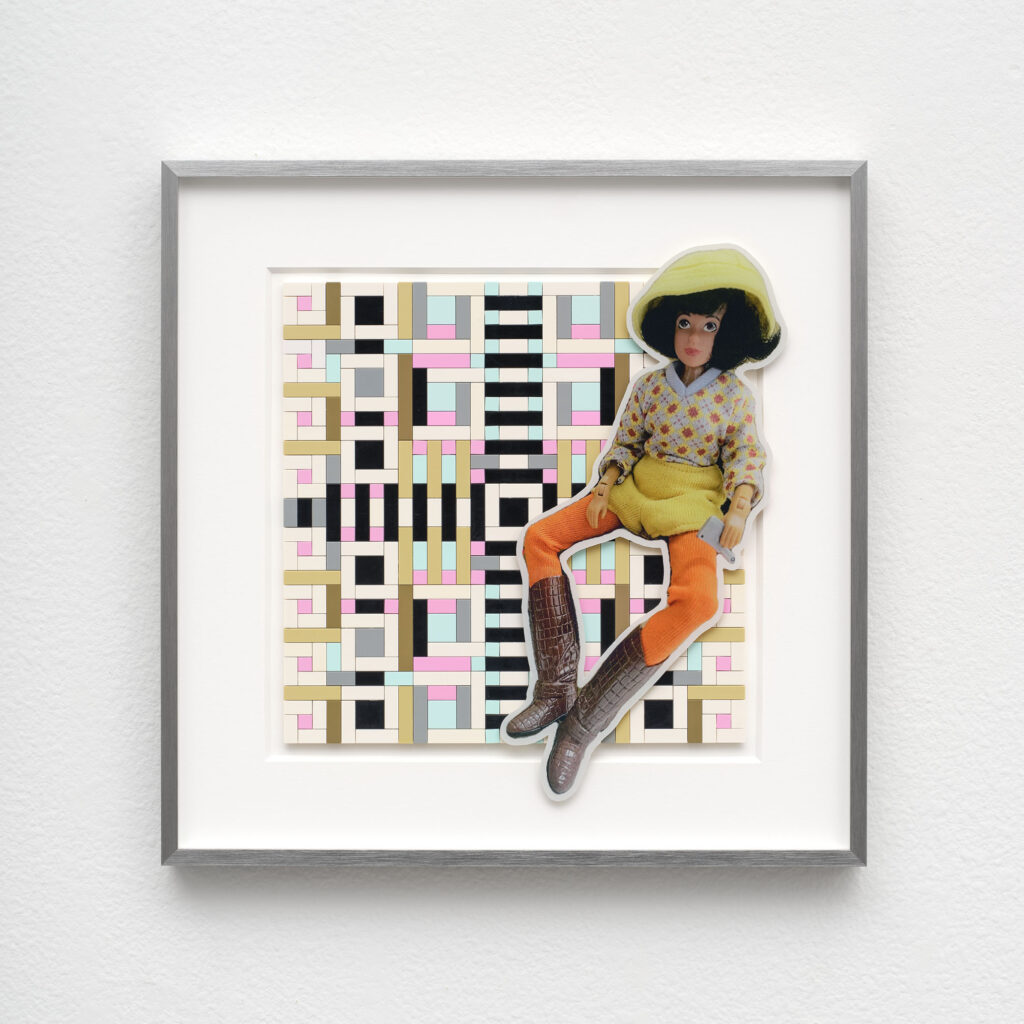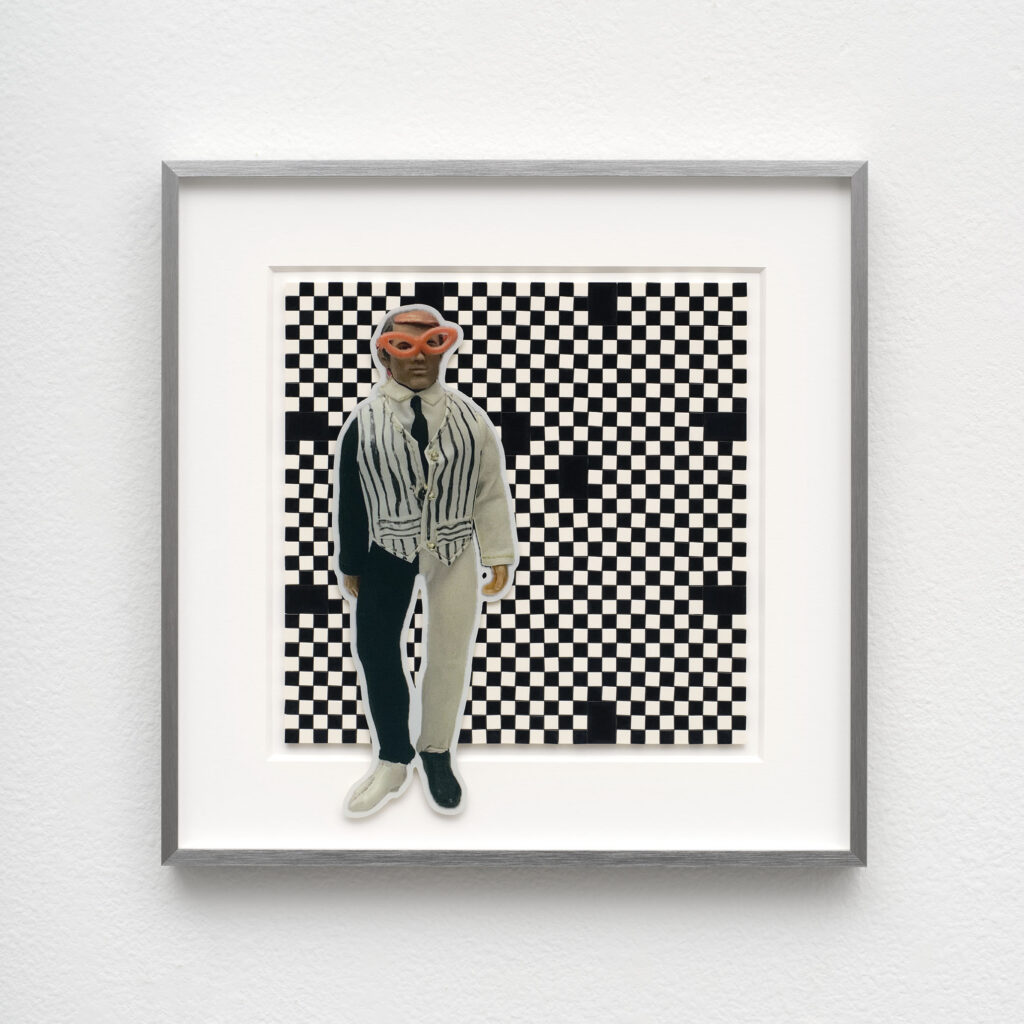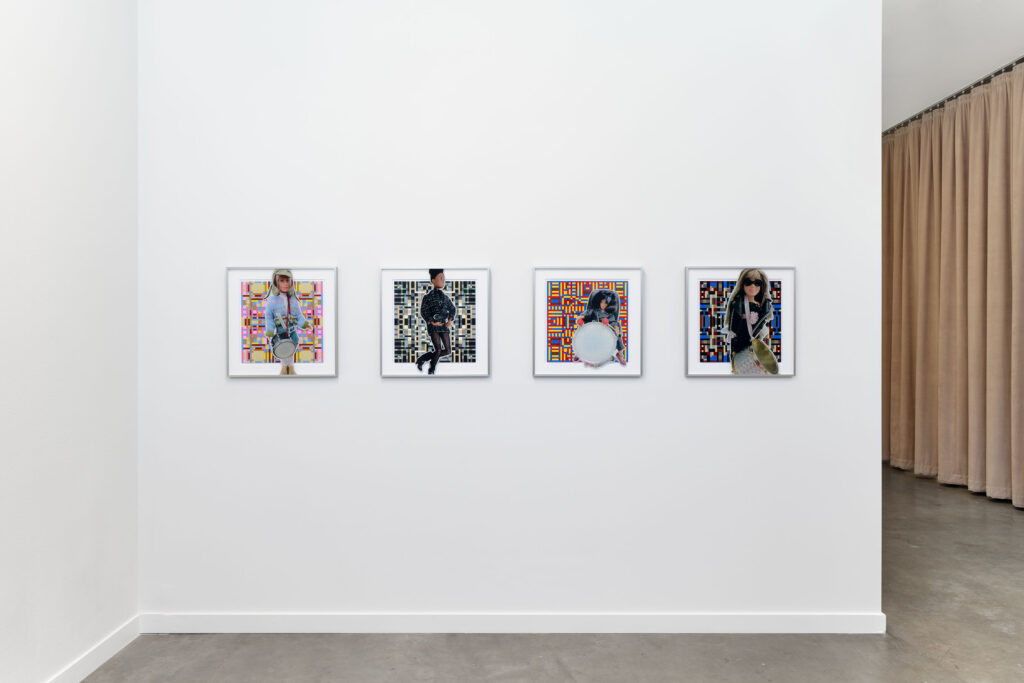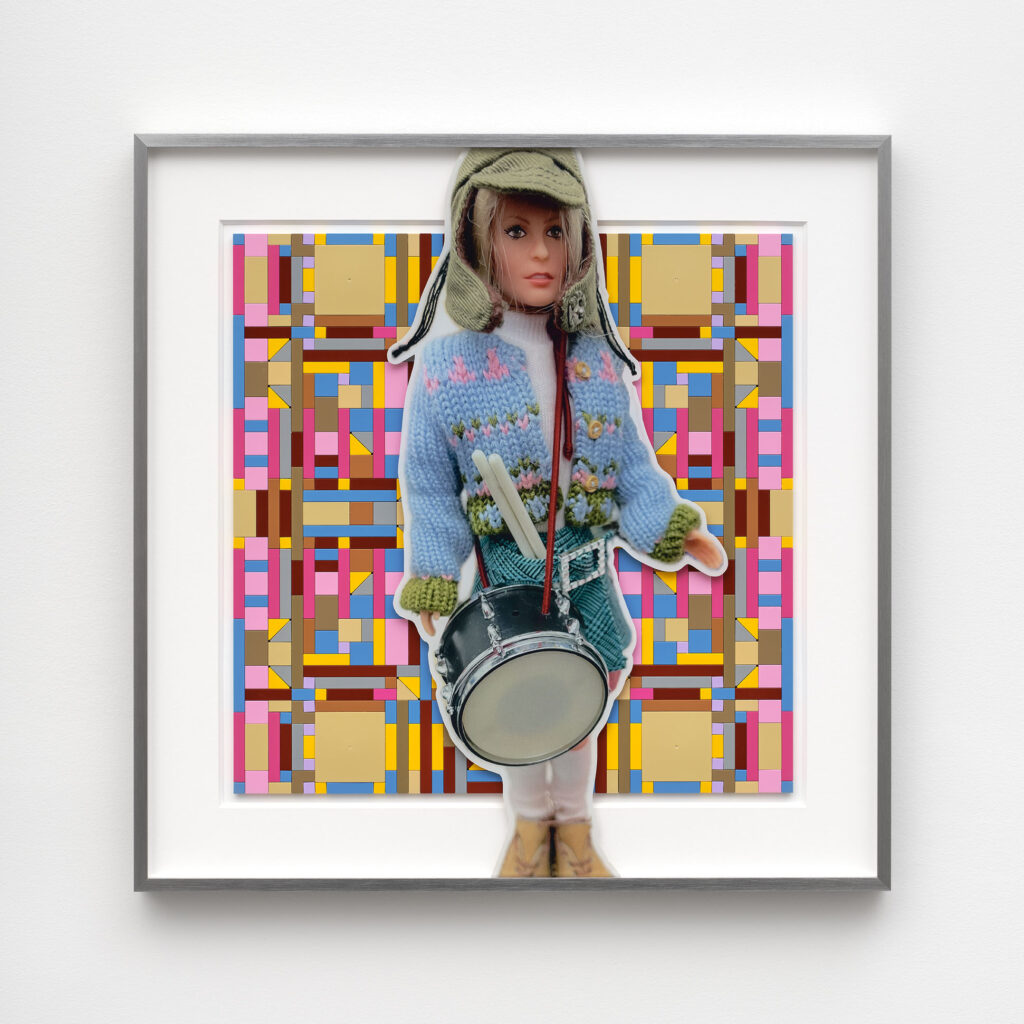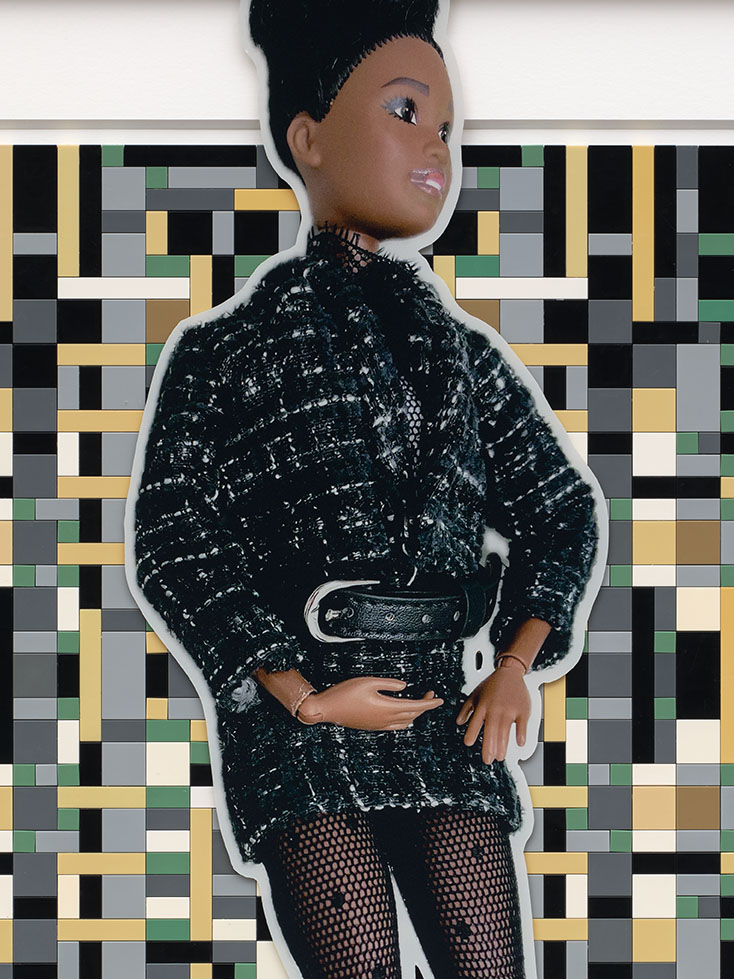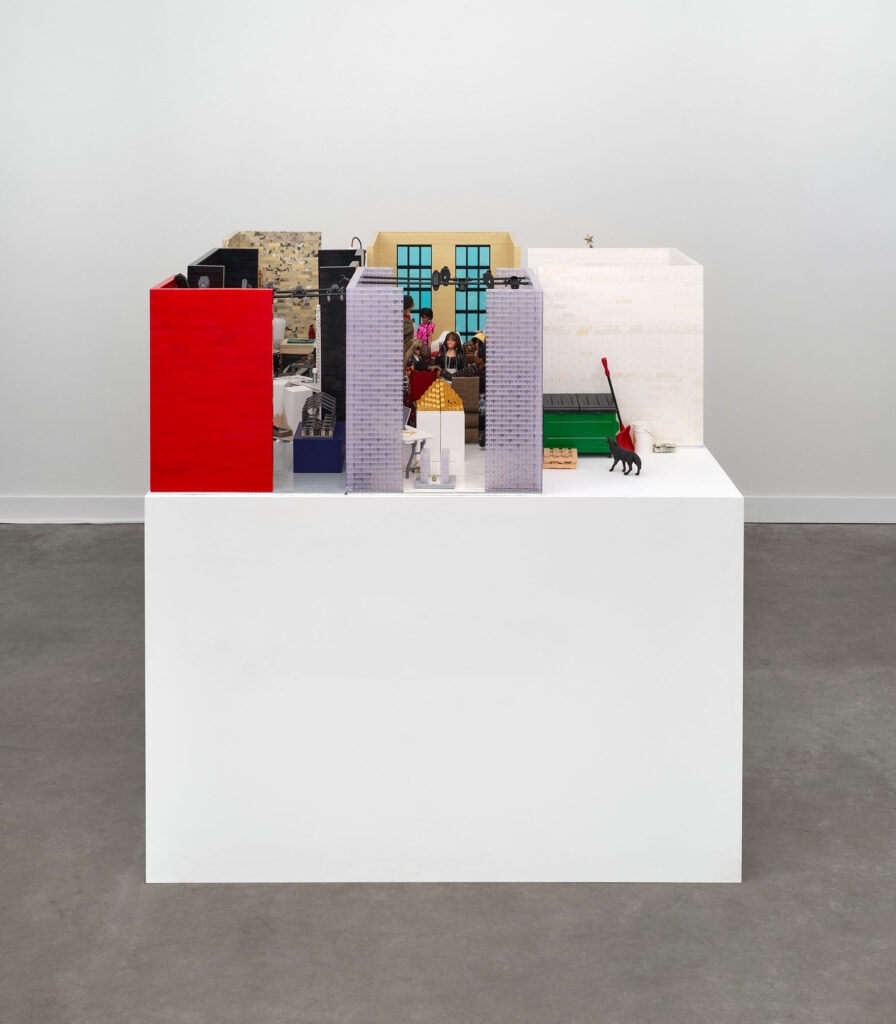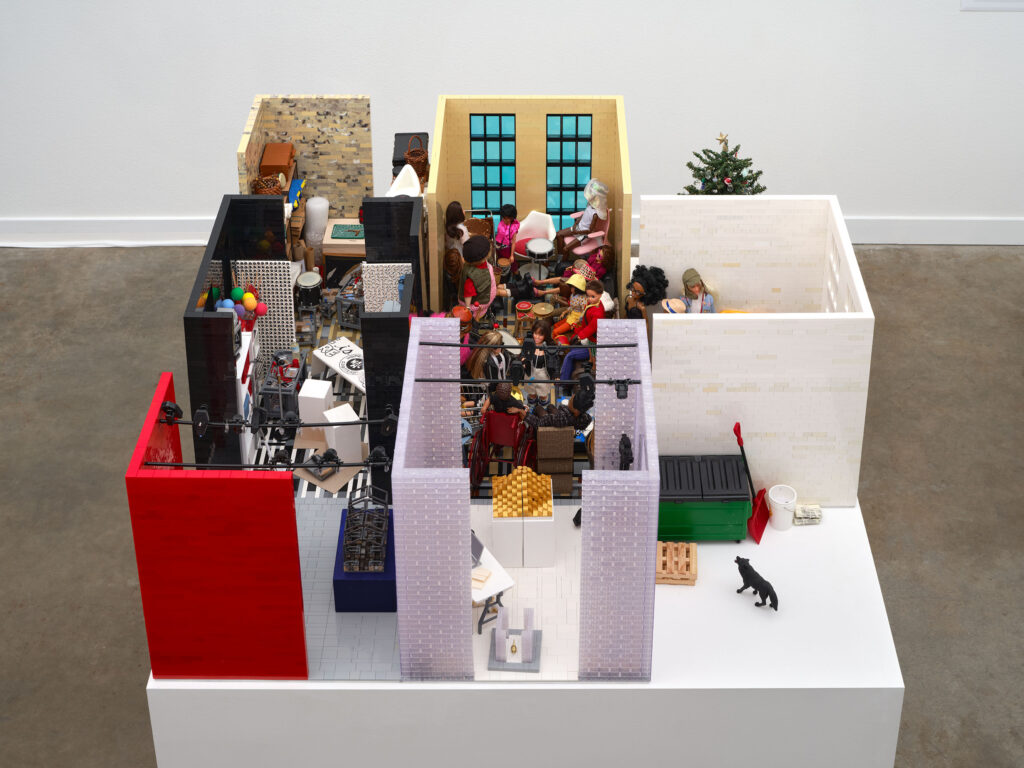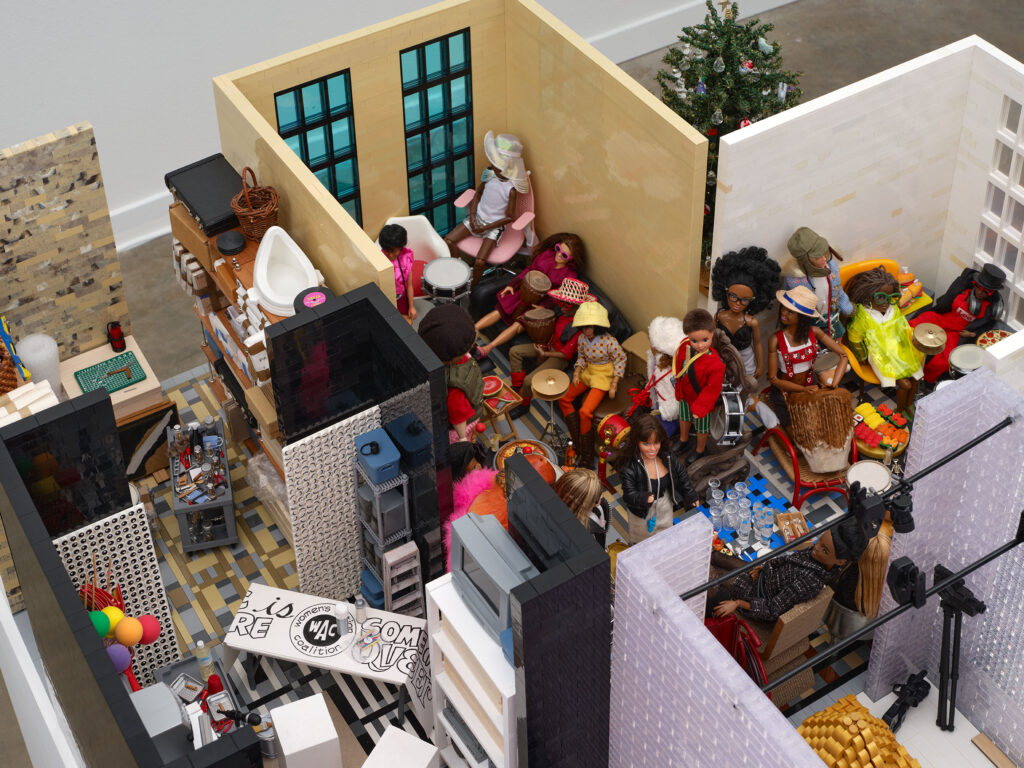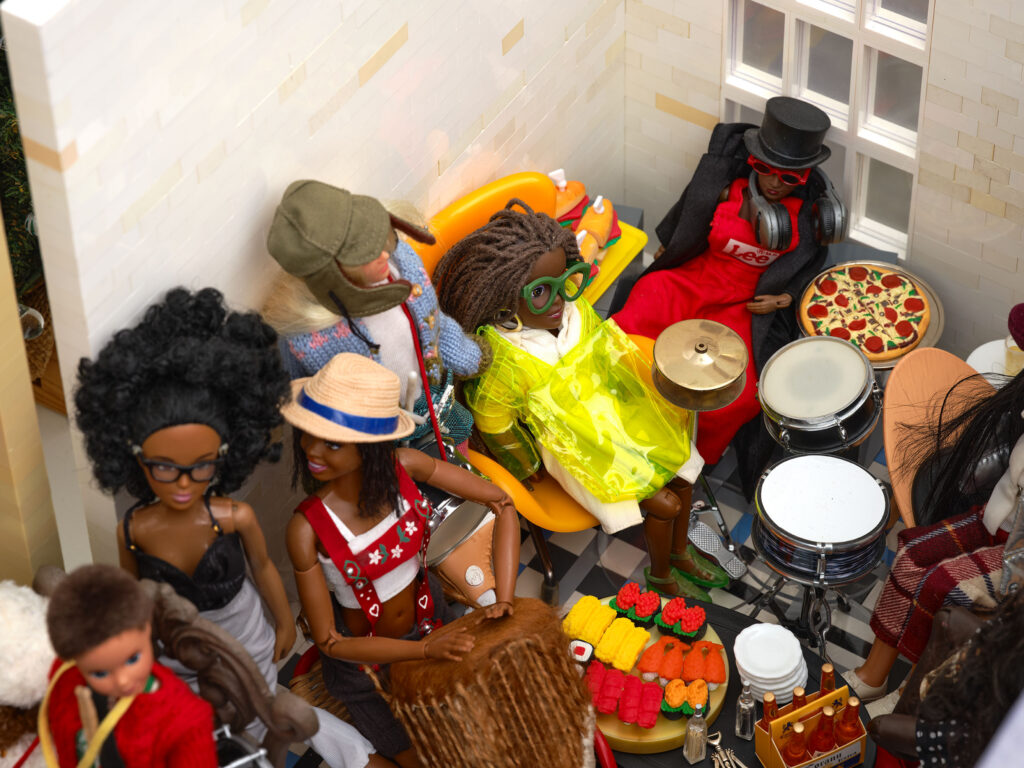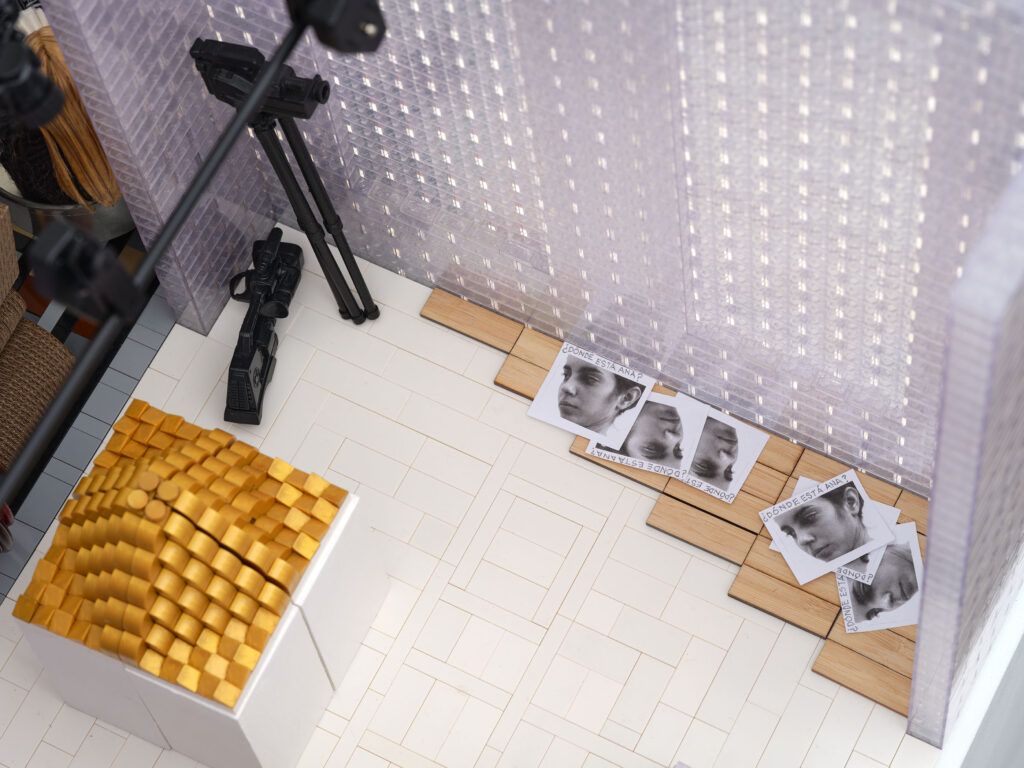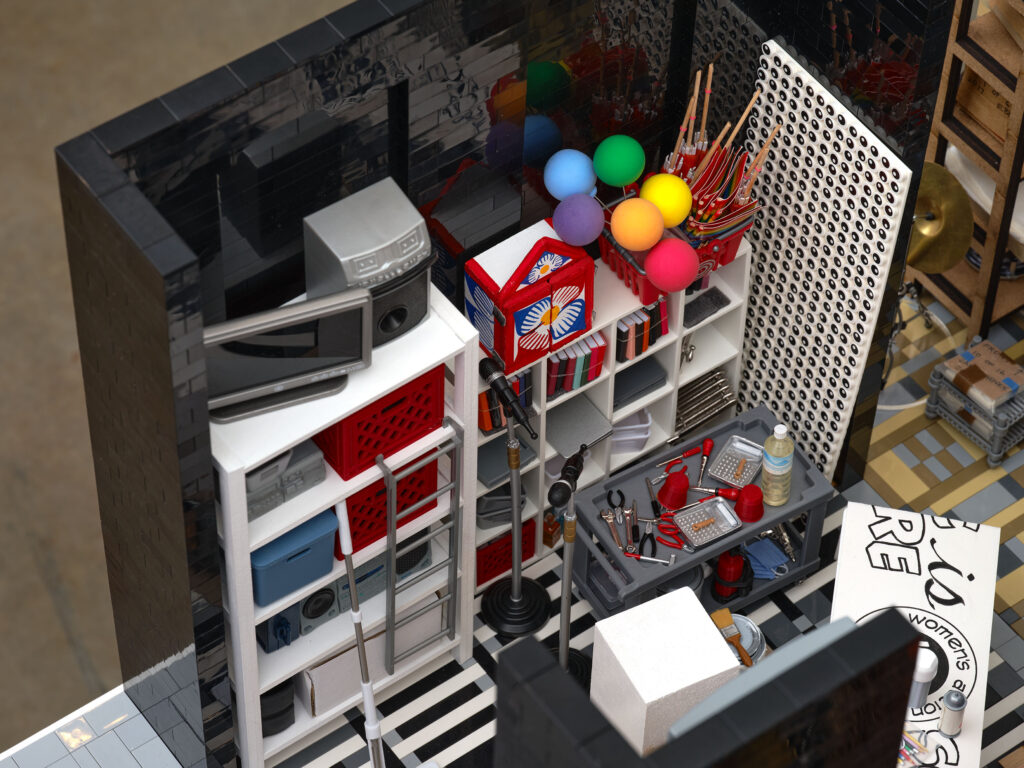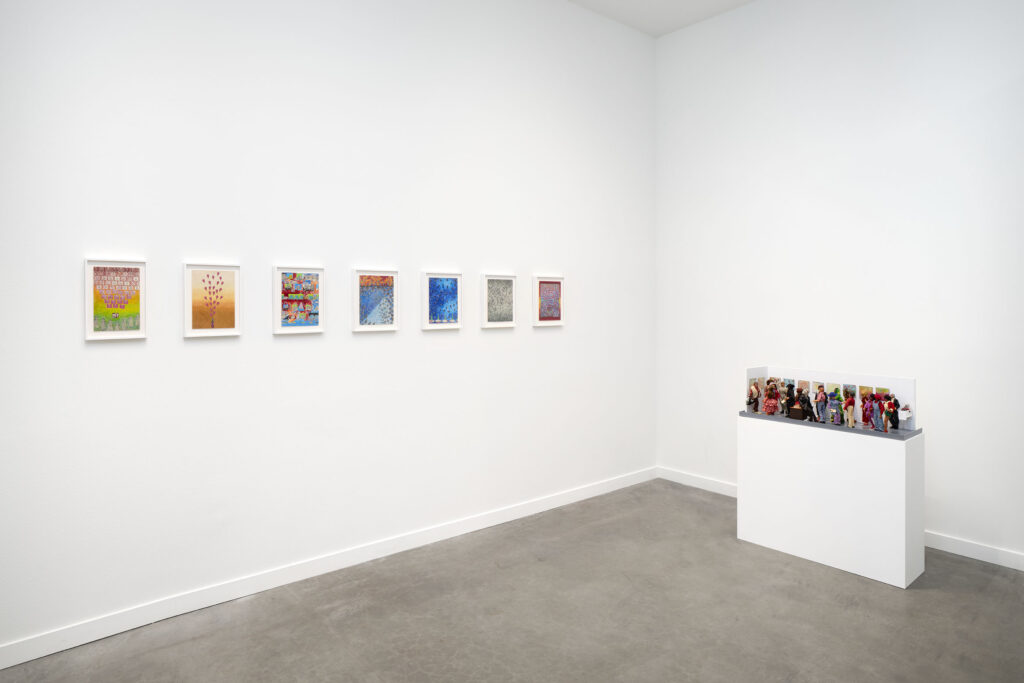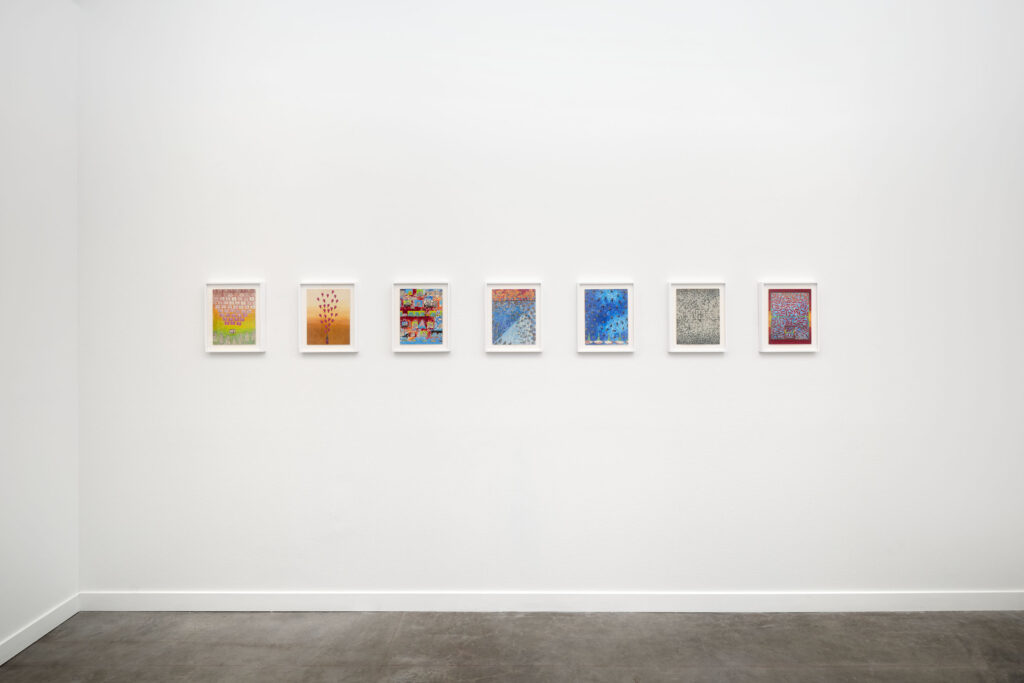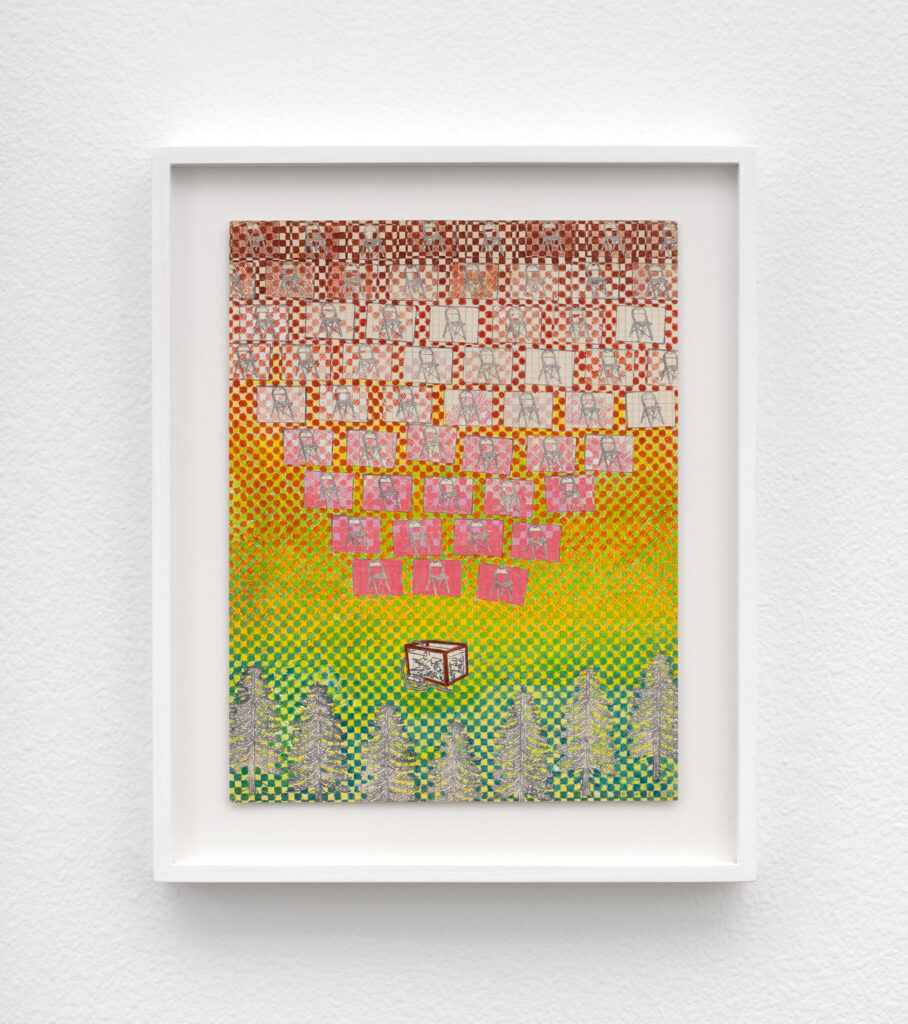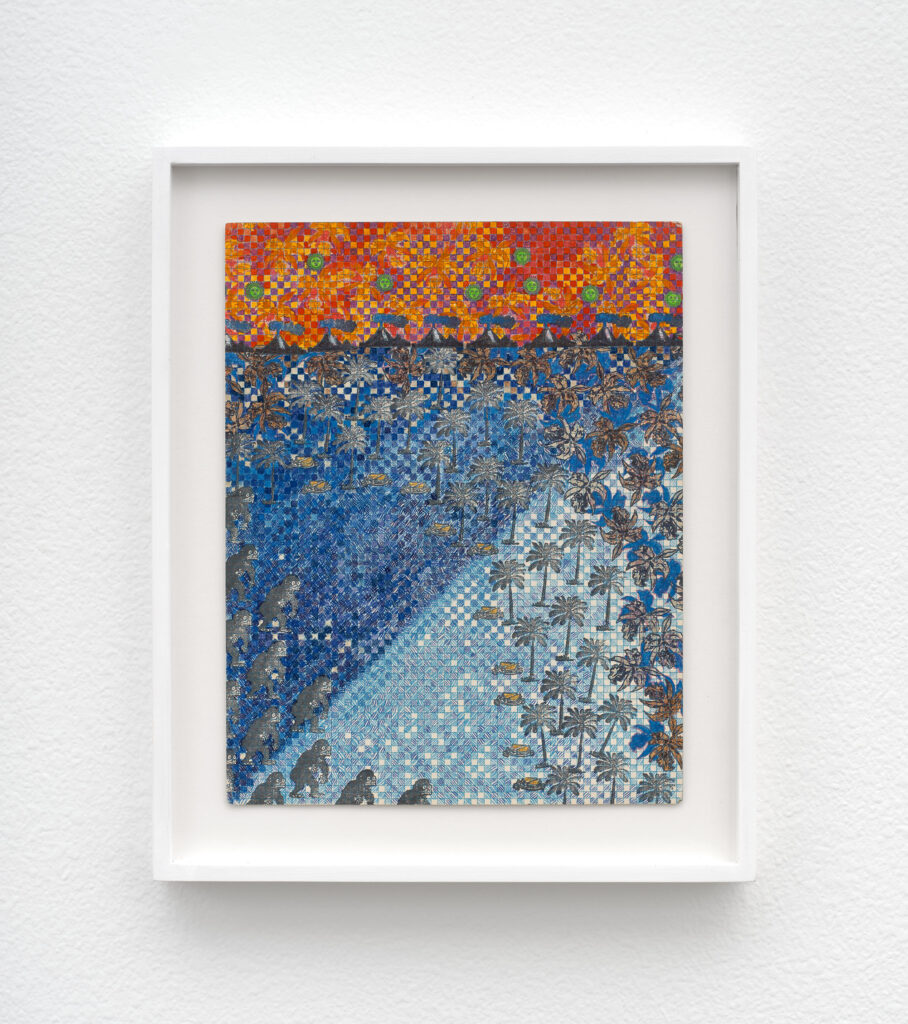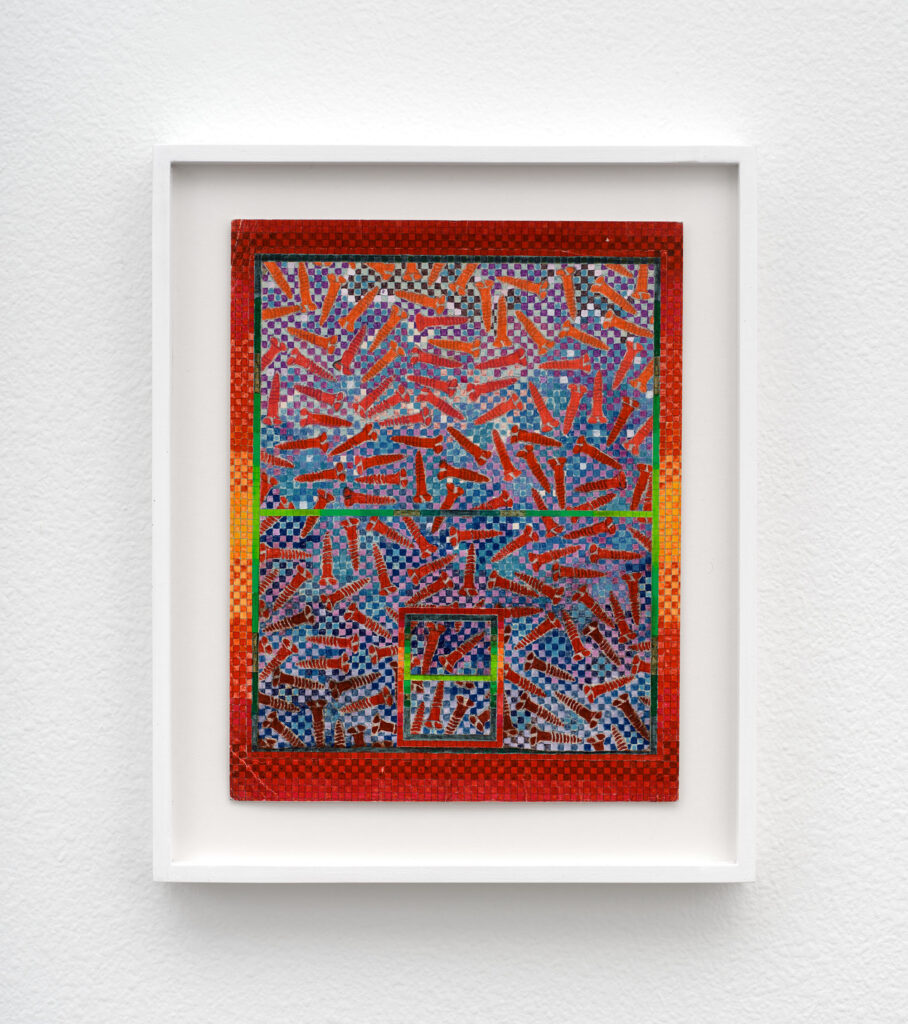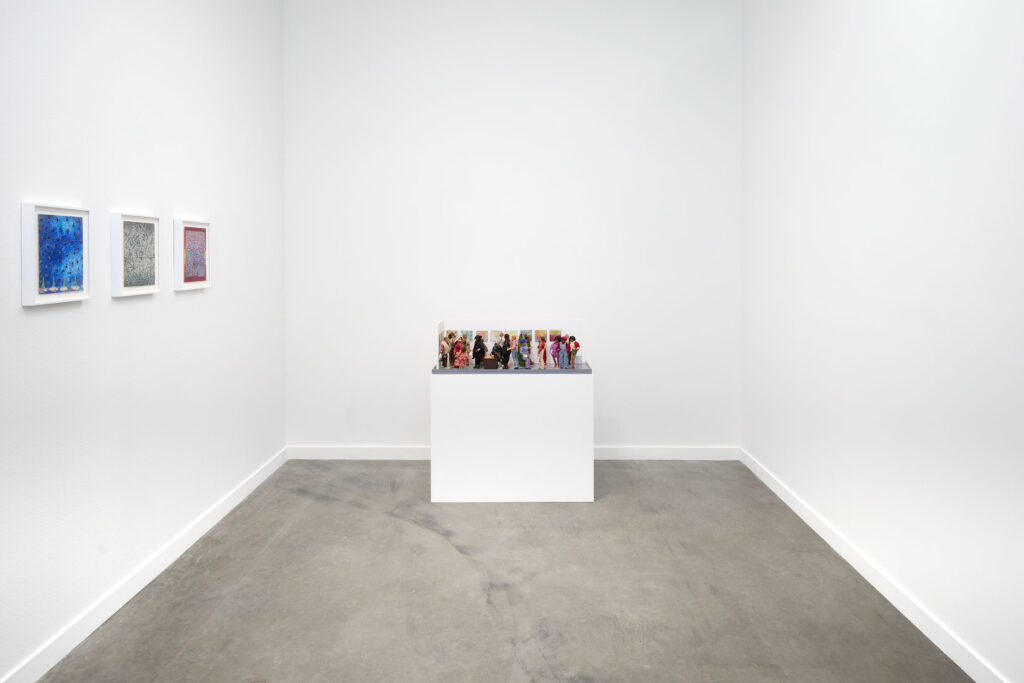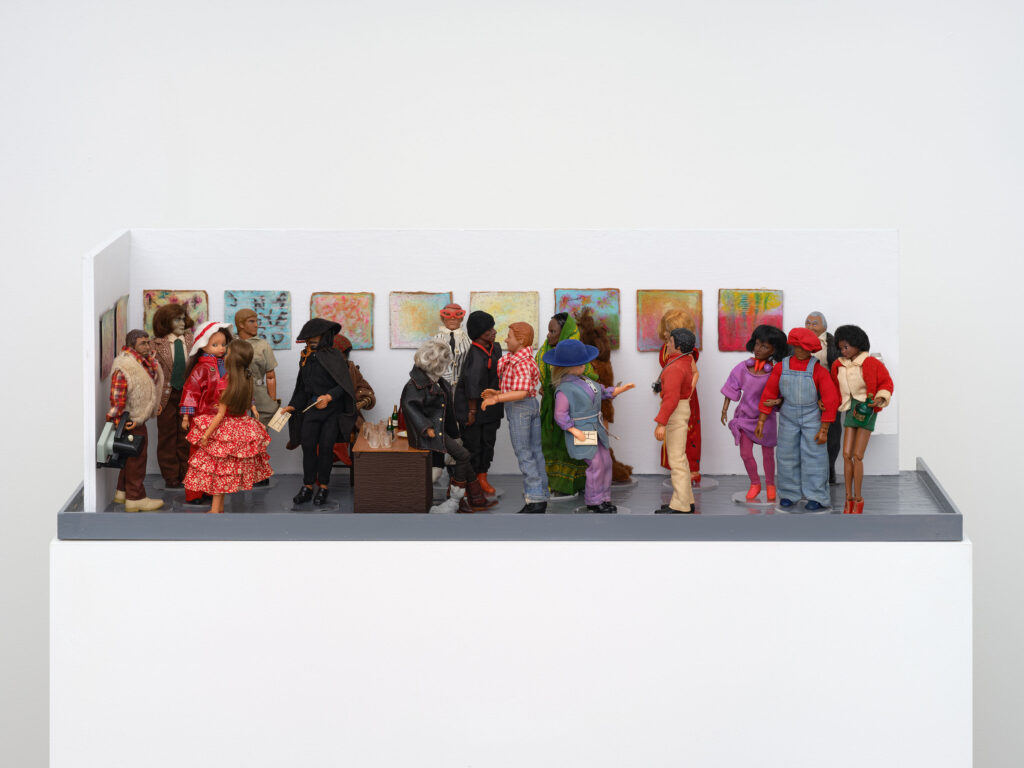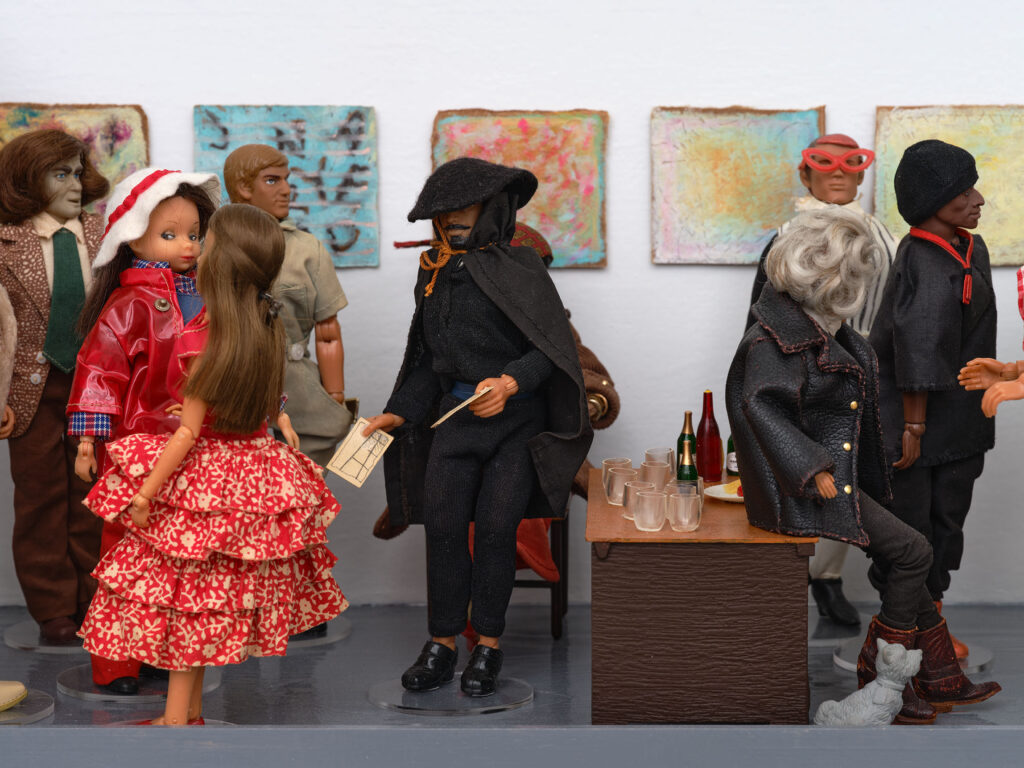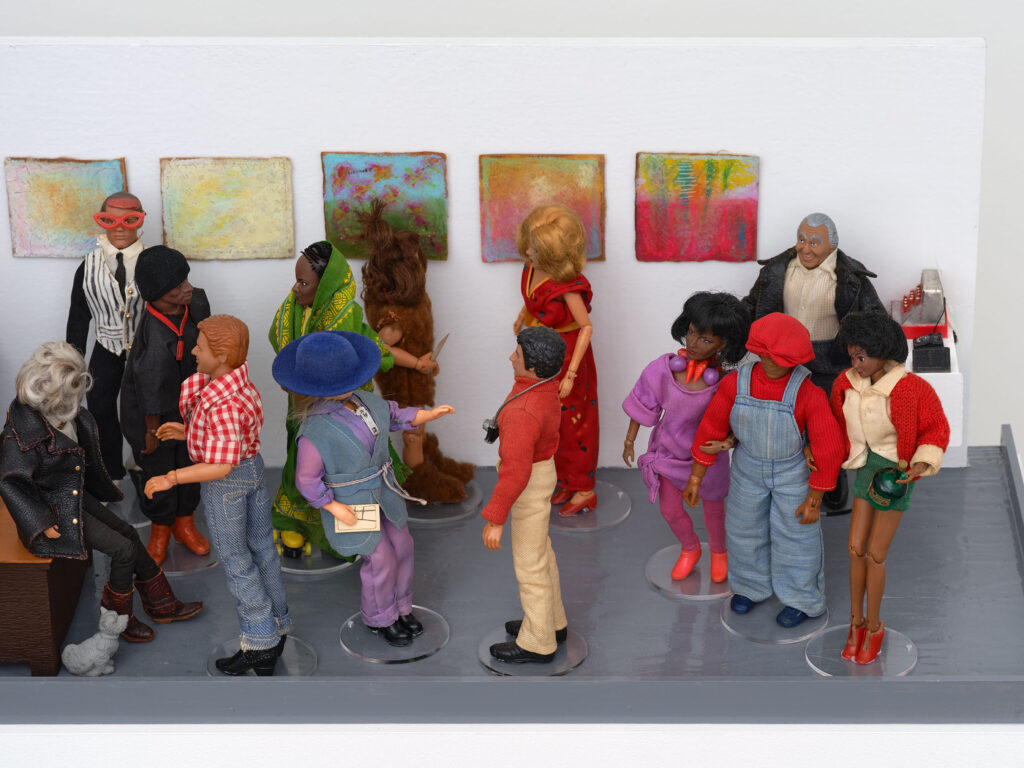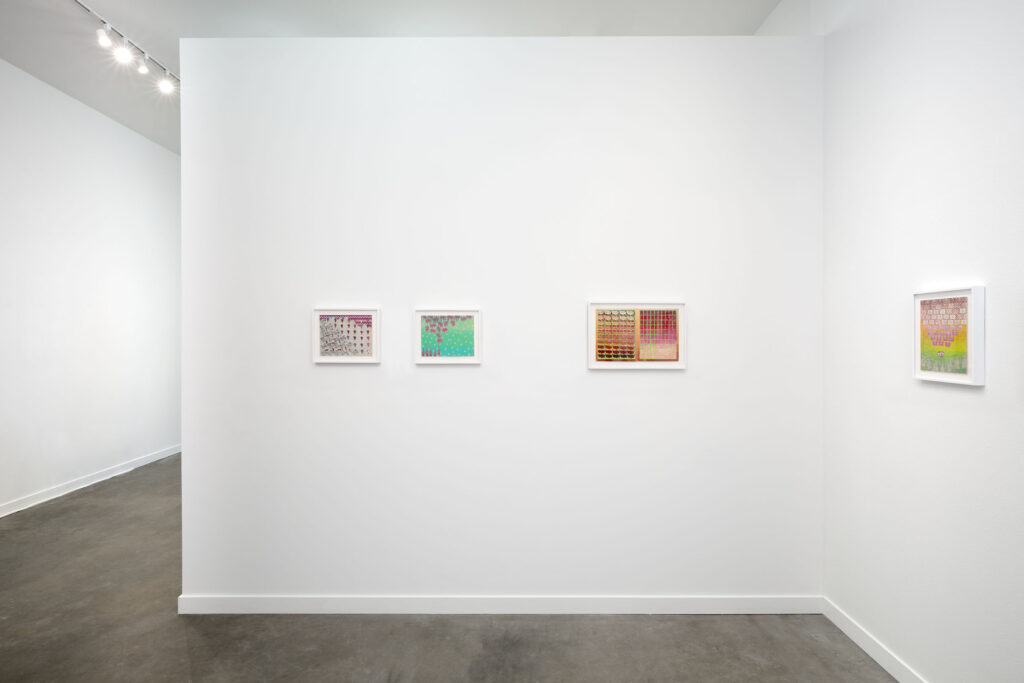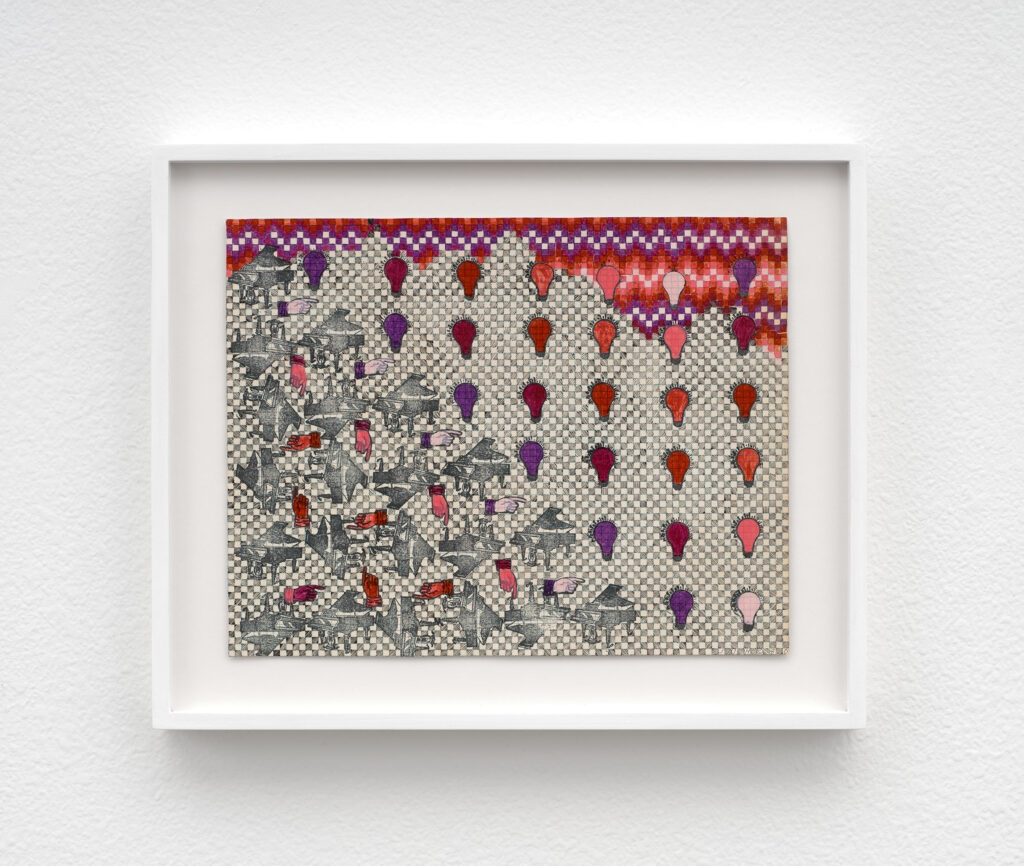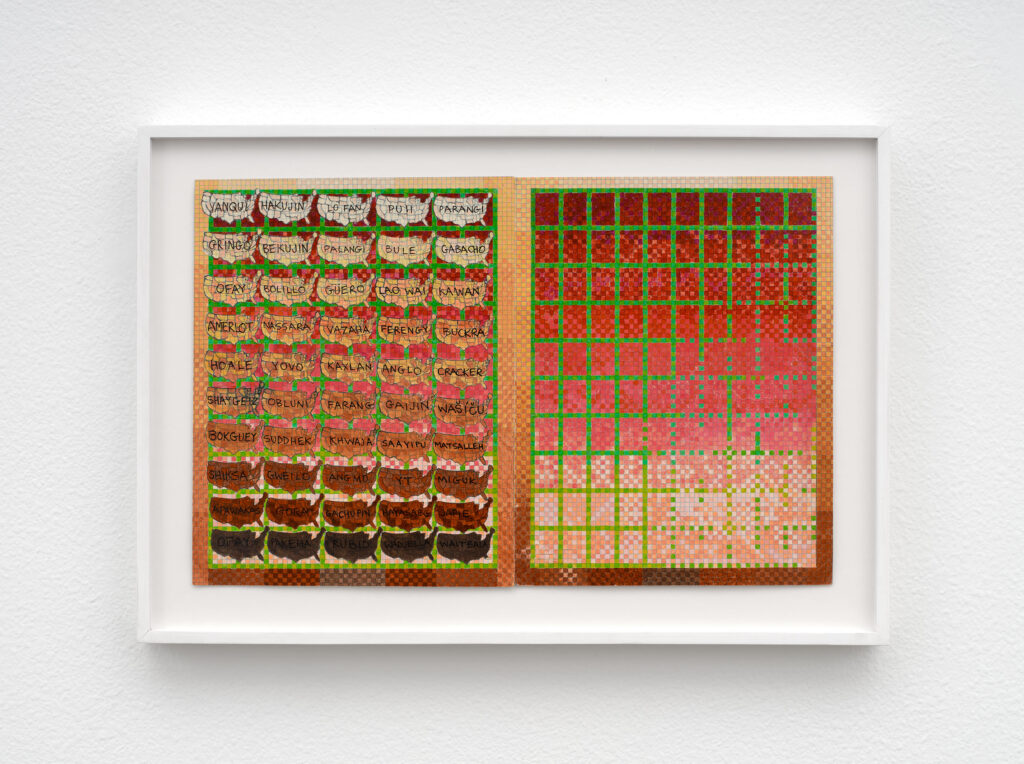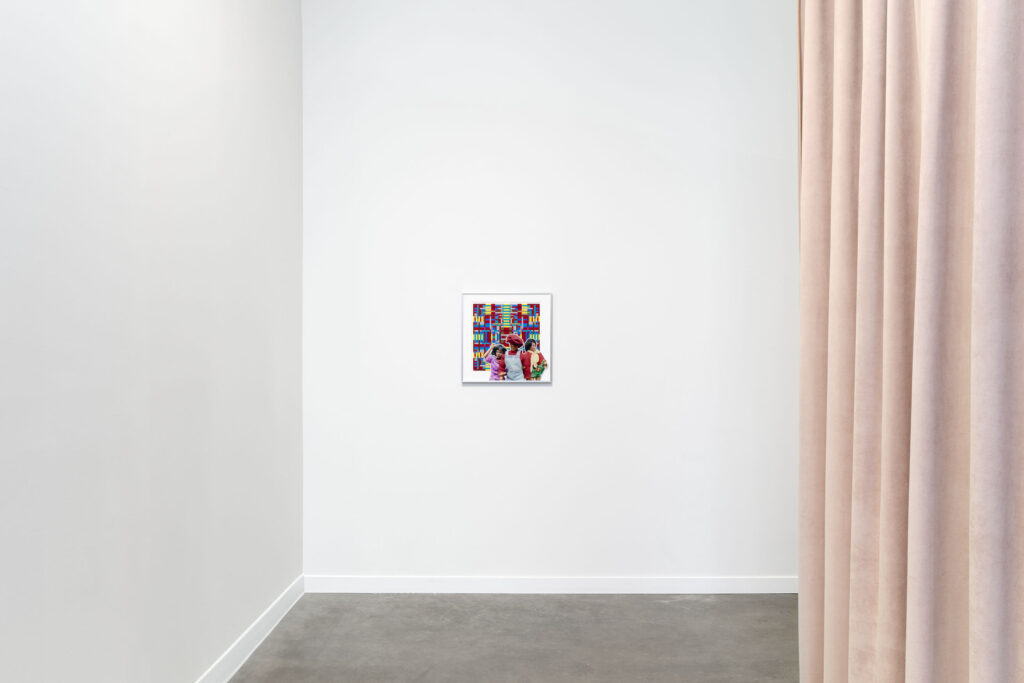Janet Olivia Henry’s Recent Academic Abstractions
Janet Olivia Henry
March 28–May 11, 2024
Janet Olivia Henry takes humor seriously, deploying play to destabilize and undermine the traditional value of everyday materials in order to open new apertures for activism and artmaking. For Janet Olivia Henry’s Recent Academic Abstractions, the artist presents an expansive new sculpture and several recent wall works, as well as drawings and a sculpture from the 1980s.
Wrought, the centerpiece of Janet Olivia Henry’s Recent Academic Abstractions, depicts a moment from Henry’s time in the 1990s drumming with Women’s Action Coalition (WAC), a feminist art-activist collective. The 45-inch by 45-inch diorama takes the shape of a multiroom building, inspired by Phyllis Kind’s gallery where the WAC Drums Corp rehearsed. Henry designed the space from equal parts memory and imagination. Using dolls, action figures, LEGOs, and other miniatures, Henry constructs a lively scene: A busy table hosts cupcakes and water bottles for over a dozen figures dressed up in leather jackets, pink faux fur, metallic shoulder pads, and all manner of art world finery, drums in hand. Storerooms are stuffed with tools and blueprints and a scaled-down replica of Duchamp’s urinal. A banner (drawn by comic book letterer Janice Chiang) lies half-painted. In one room, we find a miniaturized version of David Hammons’s Day’s End (2014–21) and a Louise Nevelson sculpture. In another, a display with busts of Wagner and Bach. A dog howls by a dumpster. Another snoozes in the office.
Wrought began in 2007. Henry starts with a narrative and slowly ideates, collecting objects, as well as digging through her archive that dates back decades. Pulling apart American culture in miniature, Henry works with this consumer miscellany as if it is a palette.
While it might be more straightforward to imagine narratives for some elements of Wrought, even if one doesn’t quite know the exact who or what, other objects have more private valances: a permanently displayed Christmas tree, for example, stands in for a tree Henry and her sister left up when her mother passed away. Other more whimsical interventions point towards the stagedness of the scene—a genie lamp hidden within a model of the gallery in the office area.
The wish-making lamp might be key: this is a hopeful commentary and critique, a clear-eyed historical reflection that doesn’t flatter idealized narratives and looks deeply into the human dynamics that have shaped and continue to shape the art world, mediated as it is by money, race, and gender. Wrought is alive with the energy of all the conviviality and conflict of togetherness, loaded with the hints of a past reality and the potentials of retelling it.
Henry’s practice reconfigures narratives without fixing them in place, and in every return to the past, something new is discovered or invented. Henry will present Janet Olivia Henry’s Recent Academic Abstractions (1982), the exhibition’s titular artwork. The diorama stages an opening, populated by figures coming to see the eponymous paintings. While most huddle, we might guess, chatting (few if any are looking at the art), off on the far right lurks a man by a cash register: a Wizard of Oz action figure stands in for famed gallerist Ivan Karp, welcoming visitors into the gallery where Henry and her work are on display.
While Henry often presents her stand-in as a painter, she doesn’t work with the medium other than as set pieces. She riffs on the value system of modernism, creating tongue-in-cheek tableaux that overturn convention. In wall works from this year, LEGO bricks appear almost like neo-concrete compositions, then plastered with her explosively dressed characters. And on a series of works-on-paper from the 1980s, Henry performs her own take on the high-modernist grid by covering 8.5” x 11” graph paper with idiosyncratic stamps, like those of folding chairs, palm trees, light bulbs, letters, or screws. Combined with precise color-pencil gradients, the compositions conjure places (Florence’s Backyard, for example) or concepts (The dialectics of isolation… sort of), and with winking irony uses off-the-shelf consumer images to toy with art history’s equally standardized conventions.
In Janet Olivia Henry’s Recent Academic Abstractions, Henry’s playful imagination combines activism and abstraction, critique and aspiration, inviting us to reflect on the objects and experiences that make up our everyday lives.
